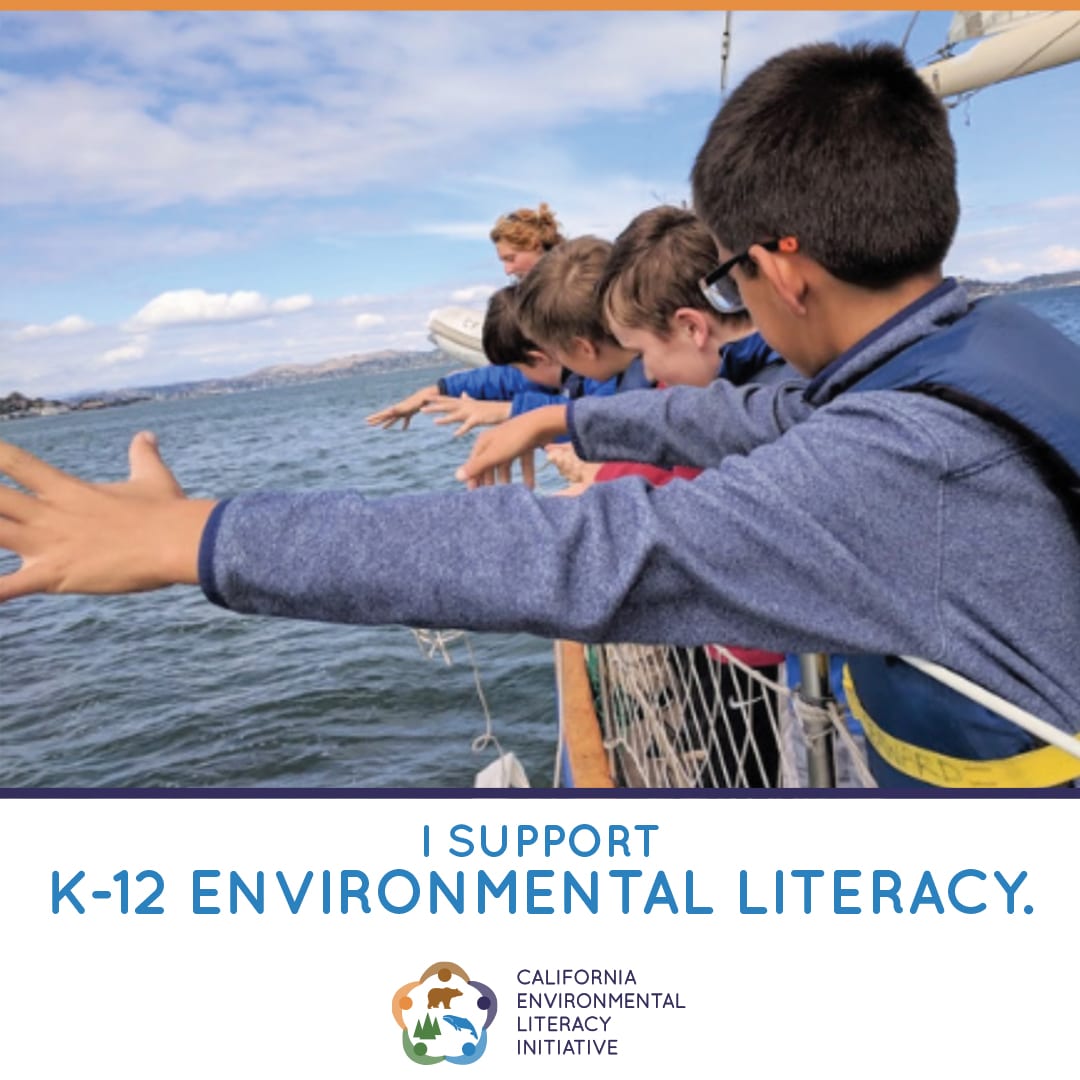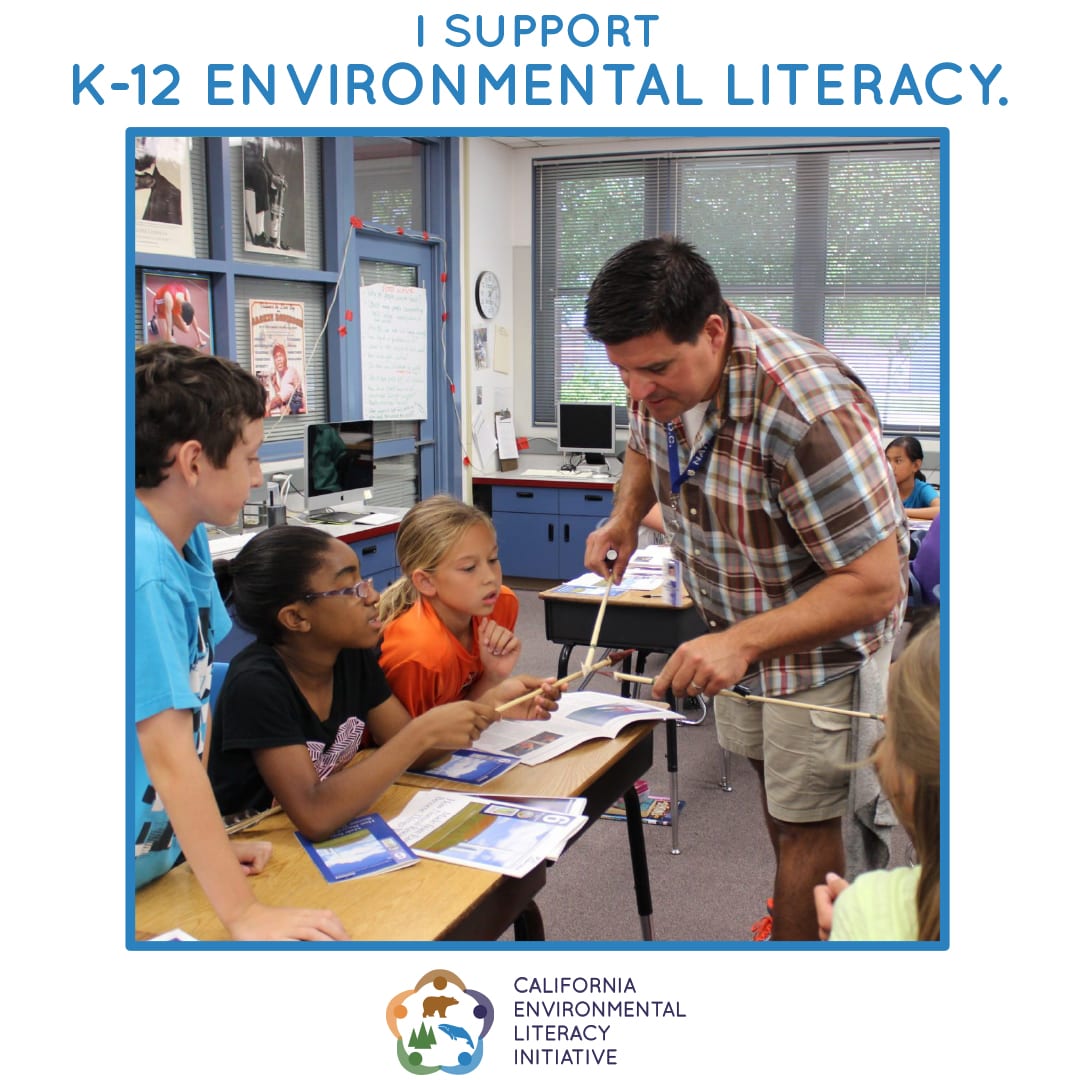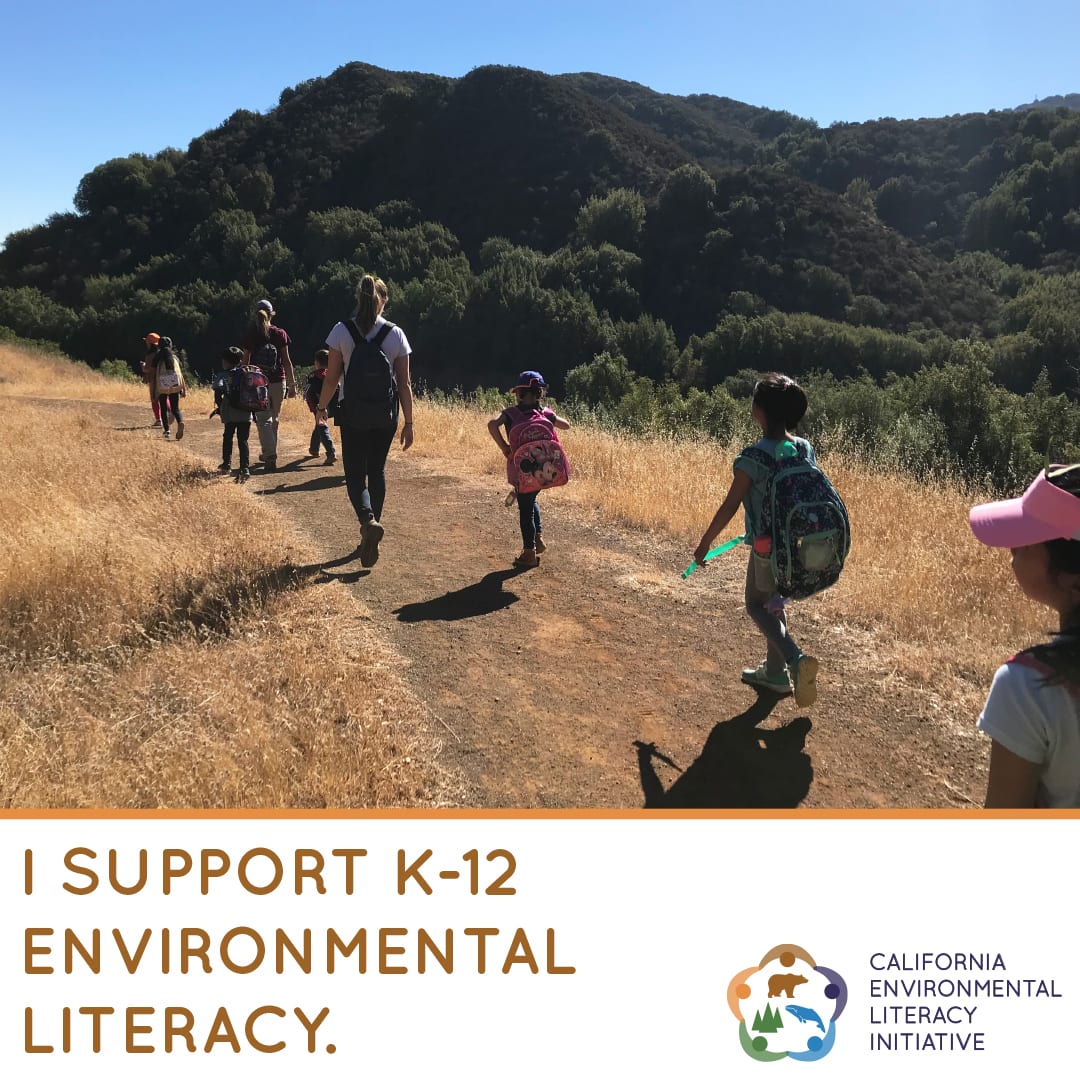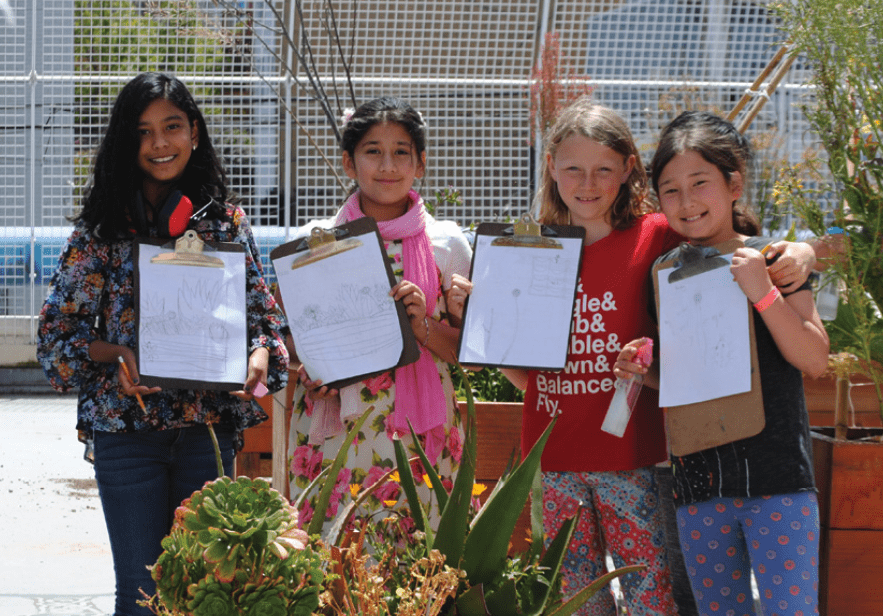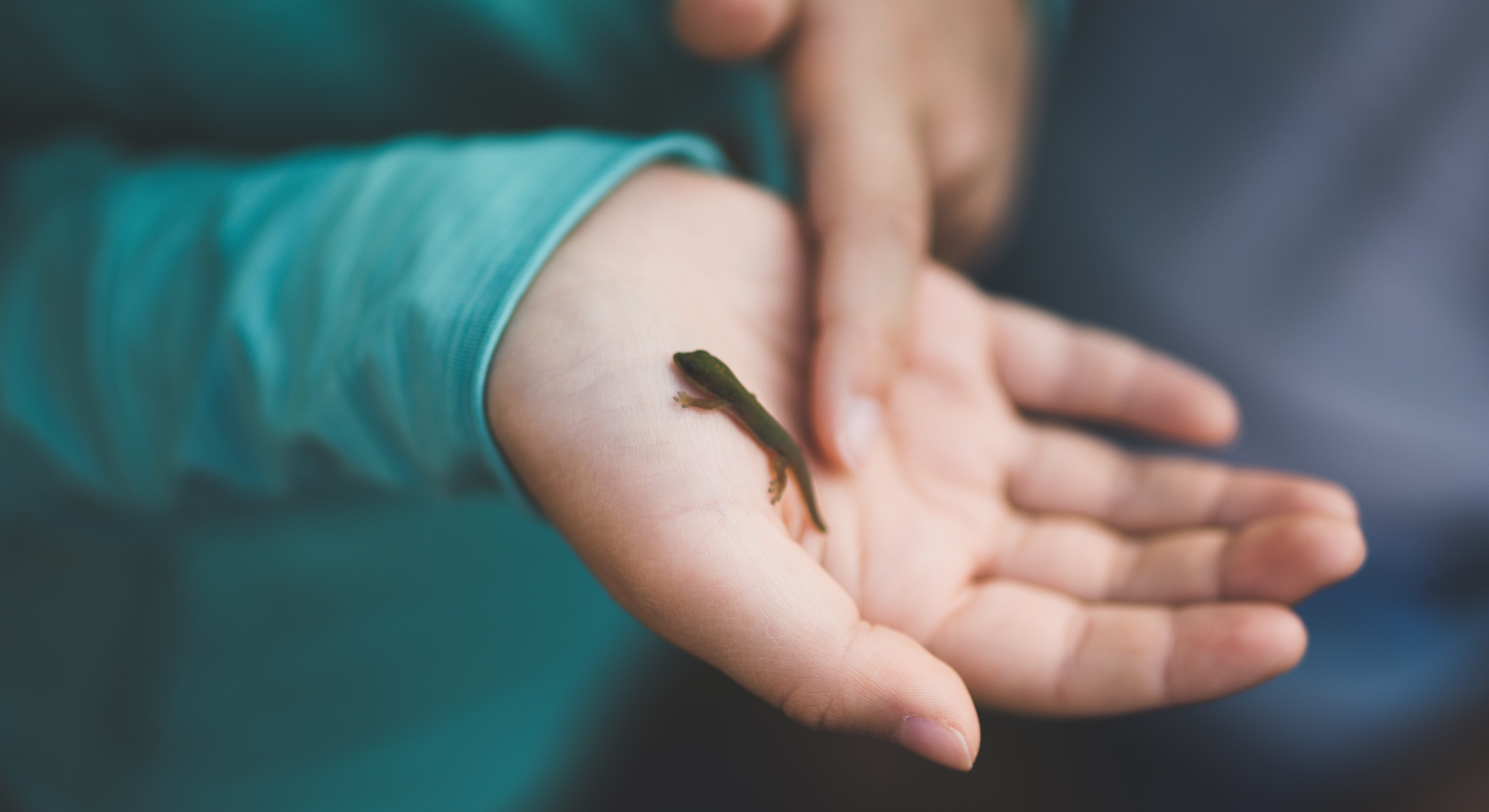
Student Toolkit
Hello from the California Environmental Literacy Initiative (CAELI)!
We believe that we have a unique opportunity to empower and support all of our young people.
As students, you have a critical role in co-creating the world we inhabit. All across the world, youth are proposing solutions and demanding change. It is time for your voices and ideas to be heard and respected, and for every one of us to step up to meet the challenges we face, together—and environmental literacy is an effective strategy to support the health of people and the planet.
The California Environmental Literacy Initiative supports students by understanding that success isn’t based solely on test scores. Schools have the opportunity, and the responsibility, to teach so much more in addition to math, language arts, history, and science. Understanding our environment, and our reliance and interconnection to it, not only values people and place—it also supports learning other subjects.
We work with schools and community organizations to incorporate hands-on real-world environmental learning opportunities for students like you because we believe that California’s public school system can—and should—provide students with engaging, challenging, relevant learning experiences that empower you to succeed.
CAELI Primer
Why Environmental Literacy?
Environmental literacy engages students in critical thinking and supports learning in ways that are relevant to your lives, communities, and the world around you. Learning in, and through, the local environment increases understanding of how core-subjects—like science, history–social science, mathematics, and English language arts—apply to the bigger picture. Integrating environmental learning with core subjects helps students meet standards-based educational goals, and creates opportunities for all students to have impactful, meaningful learning experiences rooted in local places.
Engaging Lessons for Students
CAELI collaborates with state agencies, county offices of education, K–12 districts, and community partners to prepare California’s students for the future while building skills through interaction with the environment. When the environment is used as a context for teaching core subjects, learning is more exciting, effective, and culturally relevant—this cultivates understanding of issues that directly affect peoples’ lives. We work in partnership with others to give students the skills they need to deal with critical issues and prepare you for success in school, life, and career.
With support from students like you, we can empower youth to step into the role of successful, conscious leaders who are excited about learning, innovating, and working together to create solutions for our future.
Talking Points & FAQ
- +What is environmental literacy?
Environmental literacy is the capacity to act individually and with others to support ecologically sound, economically prosperous, and equitable communities for present and future generations. Through lived experiences and education programs that include classroom-based lessons, experiential education, and outdoor learning, students will become environmentally literate, developing the knowledge, skills, and understanding of environmental principles to analyze environmental issues and make informed decisions. (California Blueprint for Environmental Literacy)
- +What is the California Environmental Literacy Initiative (CAELI)?
The California Environmental Literacy Initiative creates a system of support in California that enables all students to have local, standards- and environment-based experiences that enhance their learning in core subjects inside and outside of the classroom.
CAELI creates community-wide collaborations and supports teachers by providing access to high-quality professional learning and instructional materials that address standards and support English language learners. CAELI supports professional development opportunities and outdoor education resources, so educators can provide students with engaging environment-based educational experiences inside and outside the classroom.
- +Why is K–12 environmental literacy important for students?
Environmental literacy has the capacity to positively impact who students become and how they interact with their environment, their communities, and their world. It is a way to support all students in developing the knowledge, understanding, and opportunities that prepare them to meet challenges and fulfill their potential to imagine—and realize—a better world.
Environmental literacy is essential to the future of every student in California, and every student in California—inclusive of race, ethnicity, gender identity, ability, citizenship status, and socioeconomic status—deserves access to a high-quality K–12 education that cultivates environmental literacy.
Understanding our environment and human impact is crucial for our individual and collective wellbeing. Environmental literacy cultivates the skills your students will need to deal with critical issues and supports their capacity for success in school, life, and career.
By focusing on environmental literacy, we prepare the students in your family to address environmental challenges like water and air pollution, increased fire risk, drought, and rising sea levels, so that they and future generations can thrive.
- +How does CAELI improve the learning environment?
We see the system of public education as capable of serving students, communities, and our society. We focus work at the district level to support administrators, subject matter experts, teachers, and students because that’s where change happens. We believe the school district holds space at the heart of community and is entrusted with our most valuable resource: our young people. We celebrate the victories of our partners and recognize the strength of a network working together.
We provide the tools to do things differently. We listen to the needs of the people and districts we serve to co-create environmental learning partnerships and experiences that are based in the communities and places where students live. We work with a generosity of spirit to support academic success and environmental literacy for all students, and prioritize equity by focusing resources on communities who have experienced historic, systemic, and continued barriers to accessing environmental literacy.
- +Who does CAELI work with?
CAELI partners with state government, local education agencies, environmental education providers, community members, and funders to make environmental literacy a reality for all California’s K–12 students.
- +How can students get involved?
- Visit ca-eli.org for information and helpful tools and resources.
- Discuss environmental literacy with the students, educators, parents and school administrators in your community using the talking points in this toolkit.
- Connect with local community-based organizations to work with your school.
- Contact CAELI: info@ca-eli.org
Email Outreach
Reach out to stakeholders in your area to express the importance of K–12 environmental literacy. We’ve created some sample email language here, but feel free to change it or tell your own story!
- +To Administrators and Teachers
- As a student, I know how important it is for students to explore and appreciate their local environments. Incorporating environmental literacy into K–12 education is a key step toward raising tomorrow’s empowered leaders. As a leader in education, you are nurturing our most valuable resource: our young people. I know that your leadership results in meaningful, measurable outcomes for students and our community.
- CAELI collaborates with state agencies, county offices of education, community partners, and K–12 district leaders to prioritize real-world learning for students that is relevant to the places they live. I want you to work with CAELI to incorporate environmental literacy initiatives into your school’s coursework and lesson planning.
- Environmental literacy is an effective strategy to support the health of people and the planet. By focusing on environmental literacy, we strengthen core curricula by infusing it with an understanding of the interrelatedness of human and natural systems: preparing students like me to address critical environmental challenges, so that we, and future generations, can thrive.
- Environmental literacy prioritizes including and engaging students of color in meaningful, culturally relevant ways, empowering them to achieve academic success and advocate for themselves, their communities, and the planet. CAELI works with districts to ensure that resources, partnerships, and support systems are focused on equity, and explicitly prioritize communities that have historically been excluded from participation in environmental learning.
- Let’s work together to give students like me high quality environmental education. CAELI will help you build connections between schools and local community partners to expand access to innovative educational resources, making environmental literacy a supportive and integral part of every student’s education.
- +To Other Students and Families
- I know how important it is for students to explore and understand their local environments. Incorporating environmental literacy into K–12 education is a key step toward raising tomorrow’s empowered leaders. I want you to join mine in calling for environmental literacy in our schools.
- CAELI collaborates with community organizations and the K–12 public school system to incorporate environmental learning that is locally based and culturally relevant into the regular school day—both inside the classroom and out.
- By functioning as a network of partners, community organizations and school districts can work collaboratively and inclusively to support California’s students by highlighting the interconnectedness of people and places through environmental literacy. Educators, students, and community partners working together are already creating positive change, and continuing to identify powerful new ways to collaborate. We can help support and advance this work.
- Part of what contributes to the strength and resilience of communities is the intergenerational health and wellbeing of its people. In every community, there are leaders—including young people like me. To increase our opportunities for success, it’s crucial that our schools provide us with relevant, engaging, real-world learning experiences that will guide us into the next chapters of our lives. Join me in calling for our schools to help create these experiences for us.
- +To Community Organizations
- I know how important it is for students to explore and understand their local environments. Incorporating environmental literacy into K–12 education is a key step toward raising tomorrow’s empowered leaders. I want local organizations, like yours, to partner with my teachers and schools to educate and inspire students.
- CAELI collaborates with community organizations and the K–12 public school system to incorporate environmental learning that is locally based and culturally relevant into the regular school day—both inside the classroom and out.
- By functioning as a network of partners, community organizations and school districts can work collaboratively and inclusively to support California’s students by highlighting the interconnectedness of people and places through environmental literacy. Educators, students, and community partners working together are already creating positive change, and continuing to identify powerful new ways to collaborate. Your organization would be a great addition to the network.
- Part of what contributes to the strength and resilience of communities is the intergenerational health and wellbeing of its people. In every community, there are leaders—including young people like me. To increase our opportunities for success, it’s crucial that our schools and leaders provide us with relevant, engaging, real-world learning experiences that will guide us into the next chapters of our lives. Come work with my school to help create these experiences for us.
